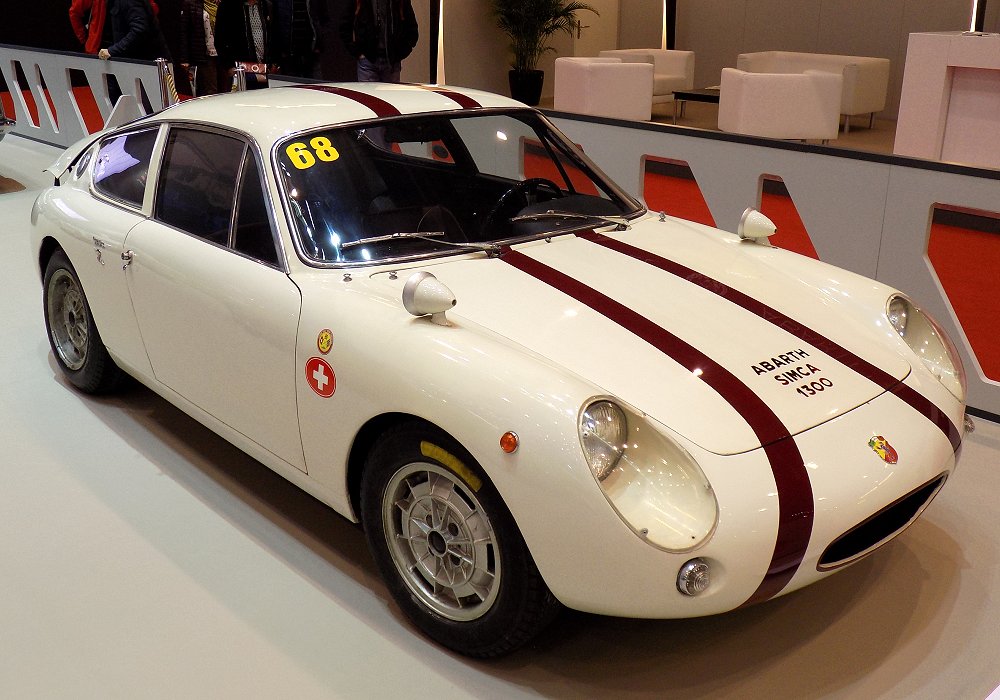In the golden age of motorsport, few cars captured the essence of speed and innovation quite like the Abarth Simca 1300 GT. This masterpiece of engineering emerged from an unlikely Franco-Italian partnership, weighing just 630 kg yet packing a punch that left competitors in awe.
The story of this remarkable machine begins with Carlo Abarth’s vision to transform ordinary cars into racing legends. When he turned his attention to the humble Simca 1100, few could have predicted the extraordinary result that would emerge from his Turin workshop.
The Birth of a Racing Legend
The early 1960s marked a transformative period in motorsport history, where small, agile cars began challenging the dominance of larger, more powerful machines. The Abarth Simca 1300 GT epitomized this revolution, emerging from the collaboration between Italian engineering prowess and French automotive foundation.
The development team faced a monumental challenge: how to extract maximum performance from a relatively modest platform. Their solution would prove both elegant and effective, setting new standards for what a small-displacement racing car could achieve.
“I remember seeing it for the first time at Monza in ’63. The sound of that twin-cam engine was unlike anything else – pure mechanical symphony. You knew immediately this wasn’t just another modified road car.” – Marco Rossi, Former Race Engineer
Historical Reference!
The relationship between Abarth and Simca began in the late 1950s, but it wasn't until 1963 that their collaboration produced what many consider their masterpiece. The 1300 GT represented a quantum leap in performance, more than tripling the power output of its base model.
The car’s development coincided with a period of intense competition in European motorsport, where every gram of weight and horsepower could mean the difference between victory and defeat.
Engineering Excellence
At the heart of the 1300 GT lies its revolutionary powerplant – a 1288cc twin-cam masterpiece that redefined what was possible from a small-displacement engine. The numbers tell only part of the story: 125 horsepower from such a compact unit was unprecedented in 1963.
The engine’s sophisticated design incorporated several racing-derived features, including a dry sump lubrication system. This technical choice allowed engineers to mount the engine lower in the chassis, improving both the center of gravity and aerodynamics.
Fact!
The dry sump system in the 1300 GT was so effective that it influenced the design of many subsequent racing engines, including those used in Formula 2 cars of the late 1960s.
Key performance innovations include:
- advanced twin-cam valve actuation for improved breathing;
- optimized combustion chamber design for higher compression;
- sophisticated oil cooling system for sustained high-speed operation;
- balanced crankshaft for smooth power delivery;
- tuned intake and exhaust systems for maximum power output.
These engineering choices proved transformative, enabling sustained high-speed operation without compromise.
Design and Aerodynamics
The fastback coupé body, crafted by Sabona & Basano, represents a perfect marriage of form and function. Every curve and contour serves a purpose, from the sloping roofline that reduces drag to the compact frontal area that minimizes air resistance.
Measuring 4458mm in length and standing just 1140mm tall, the 1300 GT cuts an imposing figure despite its diminutive size. The lightweight construction – achieving a remarkable 630kg curb weight – showcases the obsessive attention to detail in its development.
“The proportions were perfect from every angle. It’s one of those rare cars that looks fast even standing still.” – Giuseppe Bertoni, Automotive Designer, 1963
The attention to aerodynamic efficiency extends beyond the obvious, with carefully managed airflow channels helping to cool the brakes and engine while maintaining stability at high speeds.
Info!
The blue Azzurro paint scheme became iconic for the model, with several successful racing examples wearing this distinctive color. Each panel of the aluminum body was hand-formed, making every car slightly unique.
Racing Heritage
On the racetrack, the 1300 GT proved its worth immediately. The combination of light weight and powerful engine enabled a top speed of 230 km/h – a remarkable achievement for a car of its size and era.
The car’s competition debut at the 1963 Coppa Consuma demonstrated its potential, securing 6th in class against well-established rivals. This performance set the stage for a successful racing career that would span several years.
Important!
The 1300 GT's success influenced the development of future Abarth models and helped establish the company's reputation for building giant-killing racing cars.
Looking Back, Racing Forward
The Abarth Simca 1300 GT represents more than just another fast car from the 1960s. It embodies the spirit of innovation and the pursuit of performance that defined an era.
Today, surviving examples command respect not just for their rarity but for their significance in automotive history. Each car tells a story of engineering excellence and racing heritage that continues to inspire.
| Pros | Cons |
|---|---|
| Revolutionary engine design with advanced features | Limited production numbers make finding parts challenging |
| Exceptional power-to-weight ratio | High maintenance requirements due to racing-oriented design |
| Innovative aerodynamic solutions | Specialized mechanical knowledge needed for proper maintenance |
| Proven racing pedigree | Relatively fragile aluminum body panels |
| Historical significance | Limited interior space and comfort |
| Investment potential | Complex engine design requires expert servicing |
| Remarkable handling characteristics | High restoration costs |

